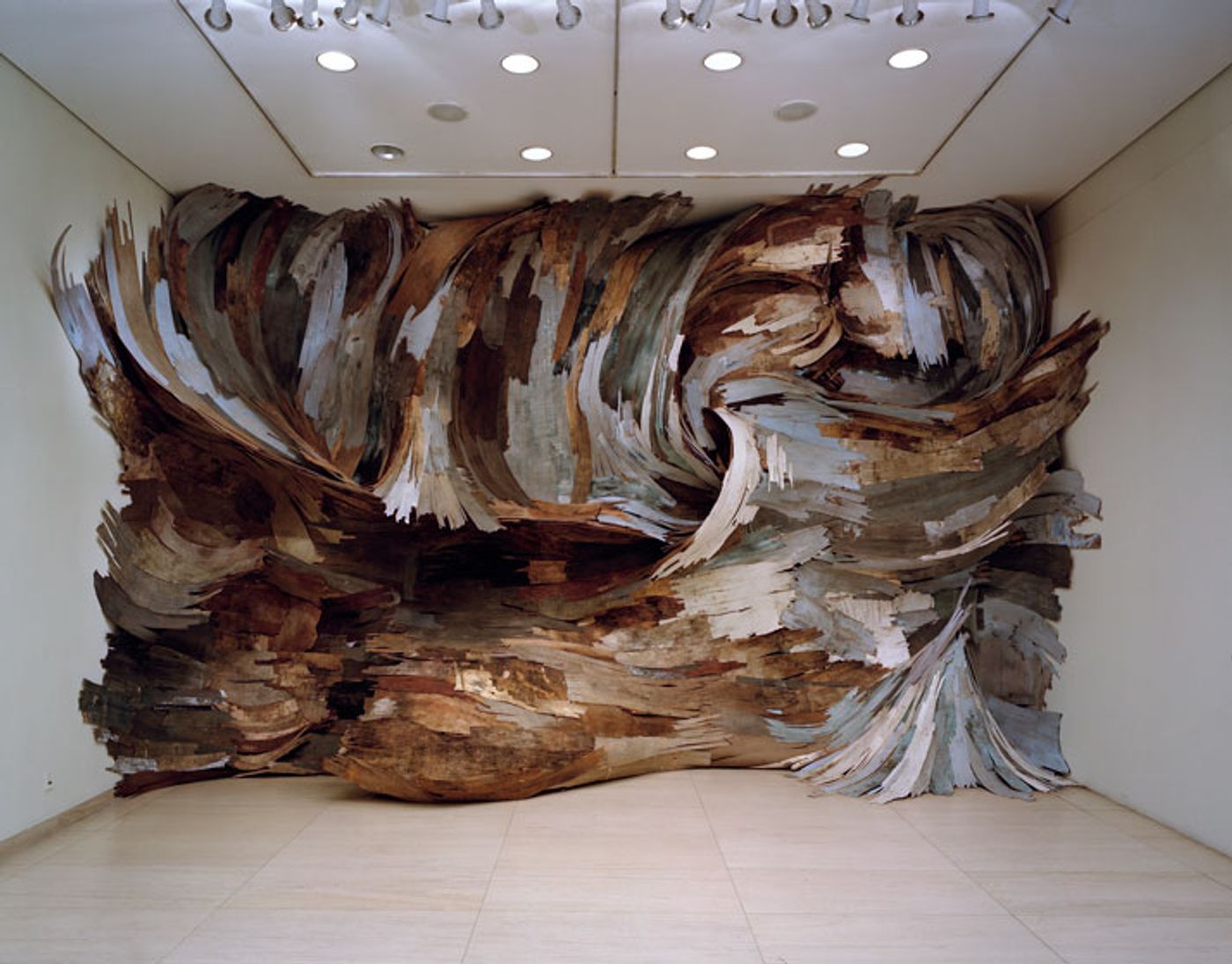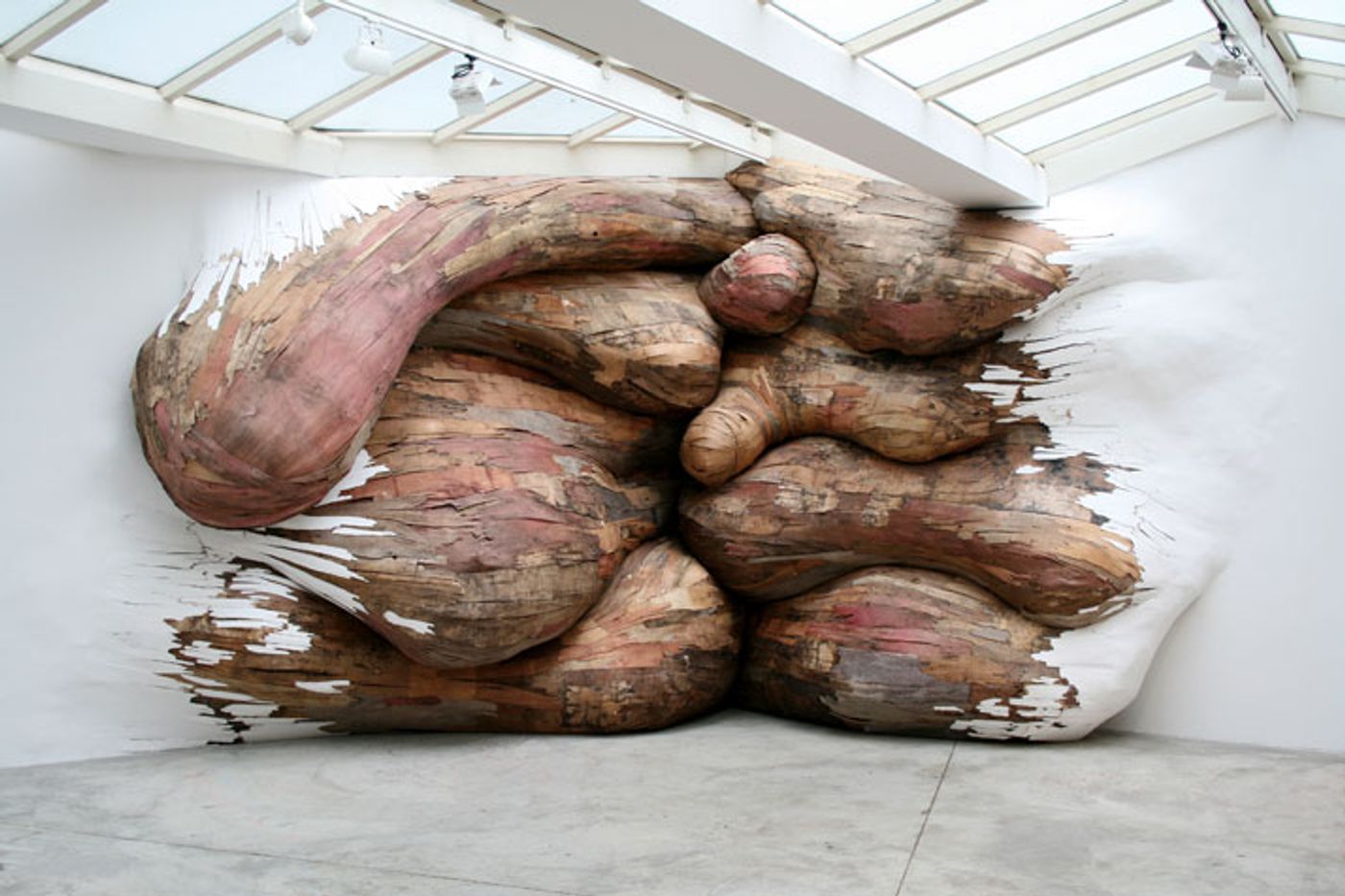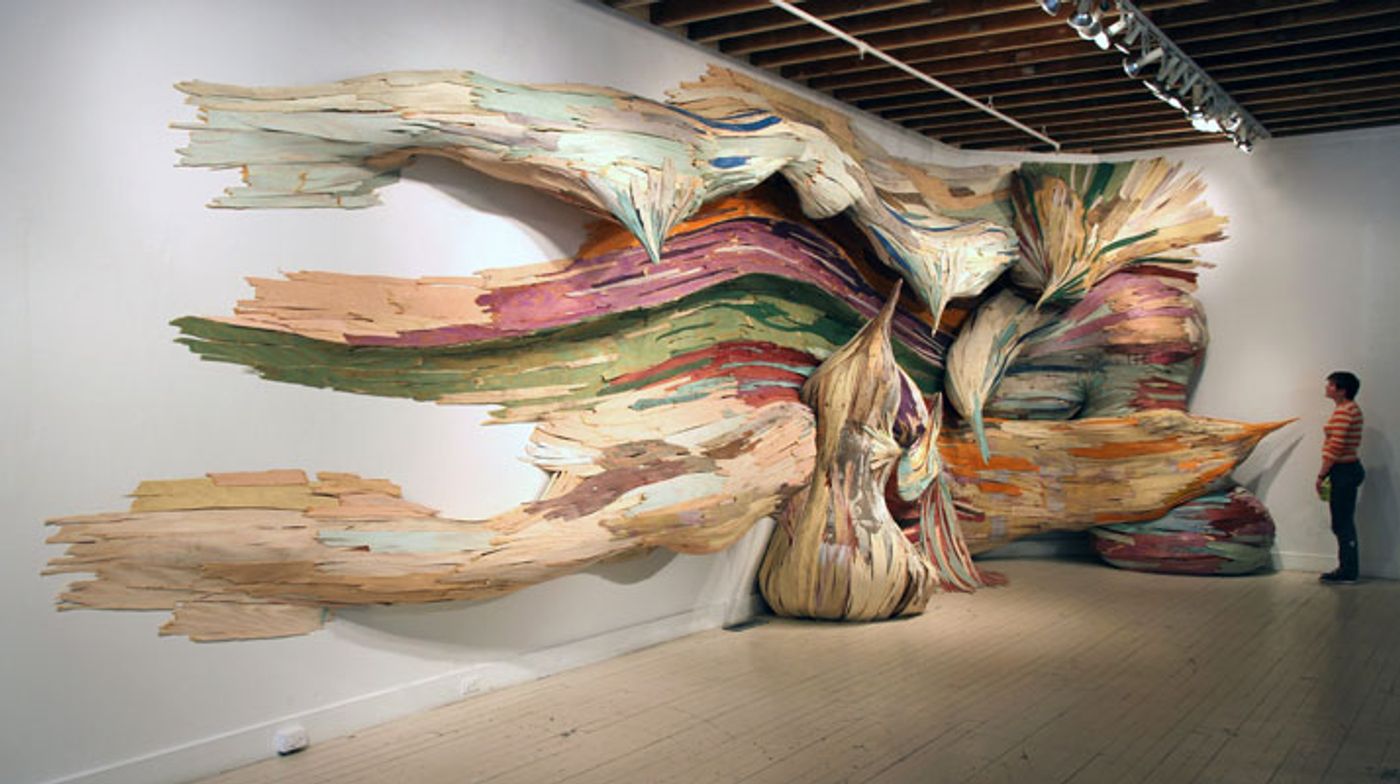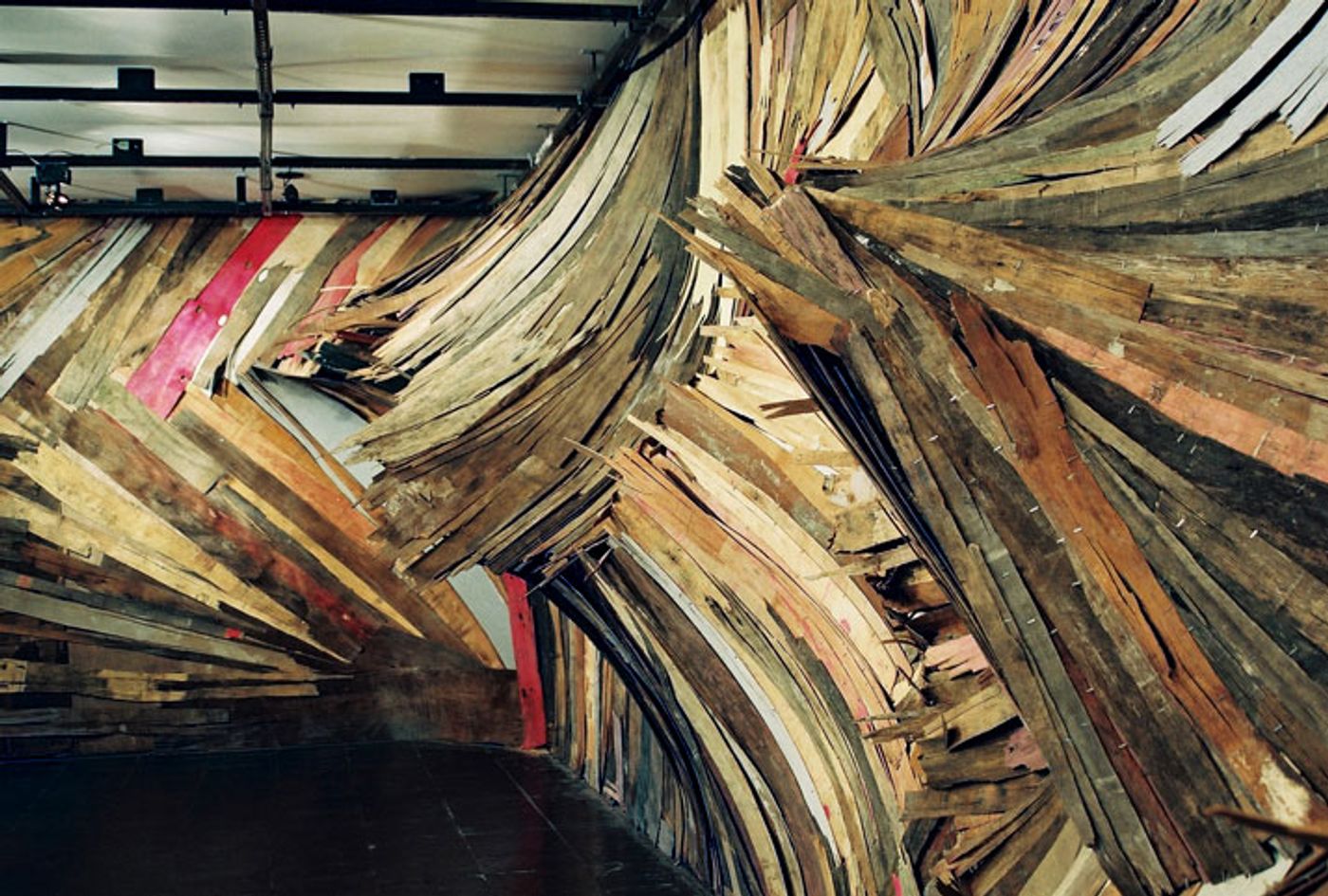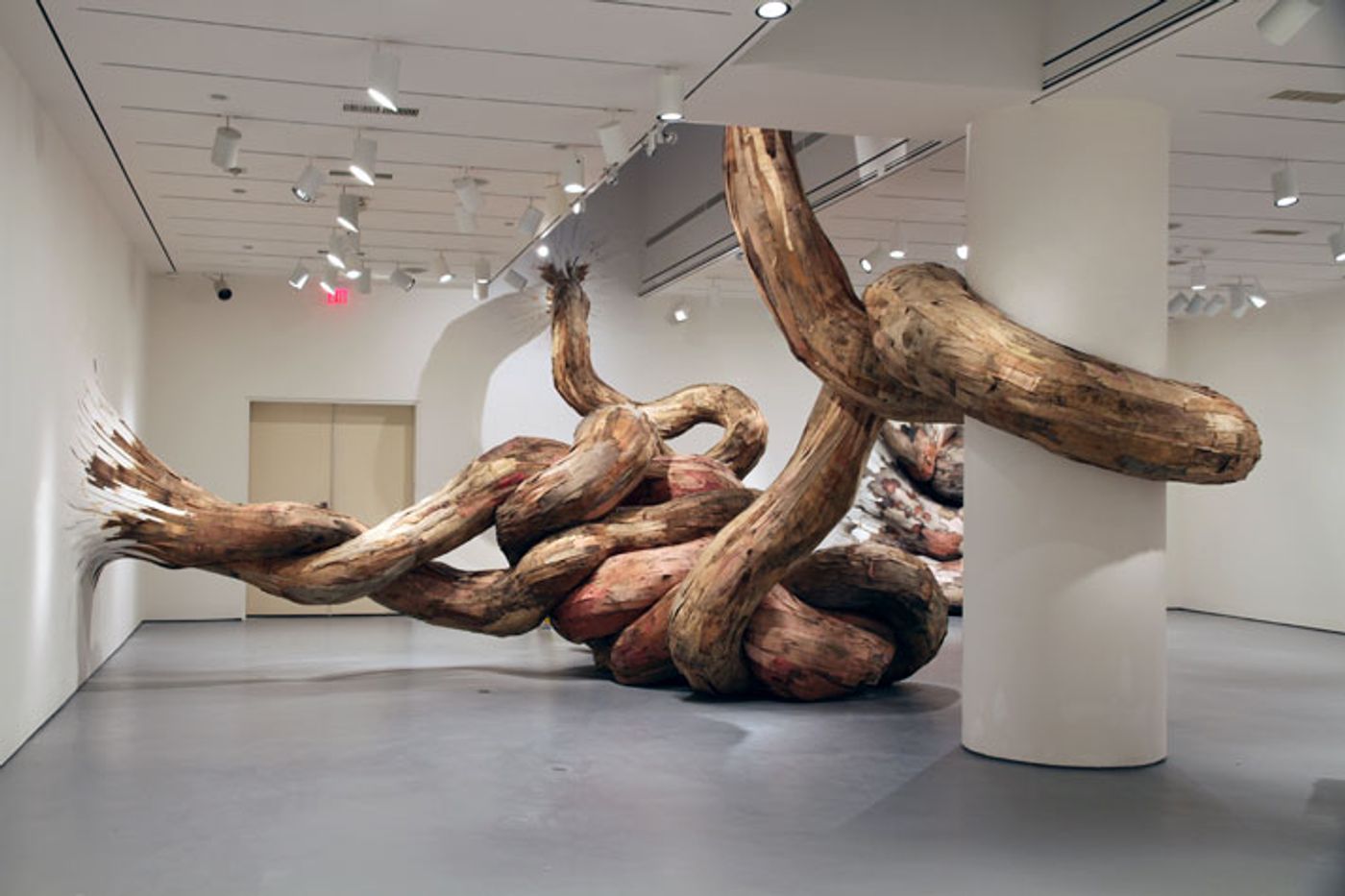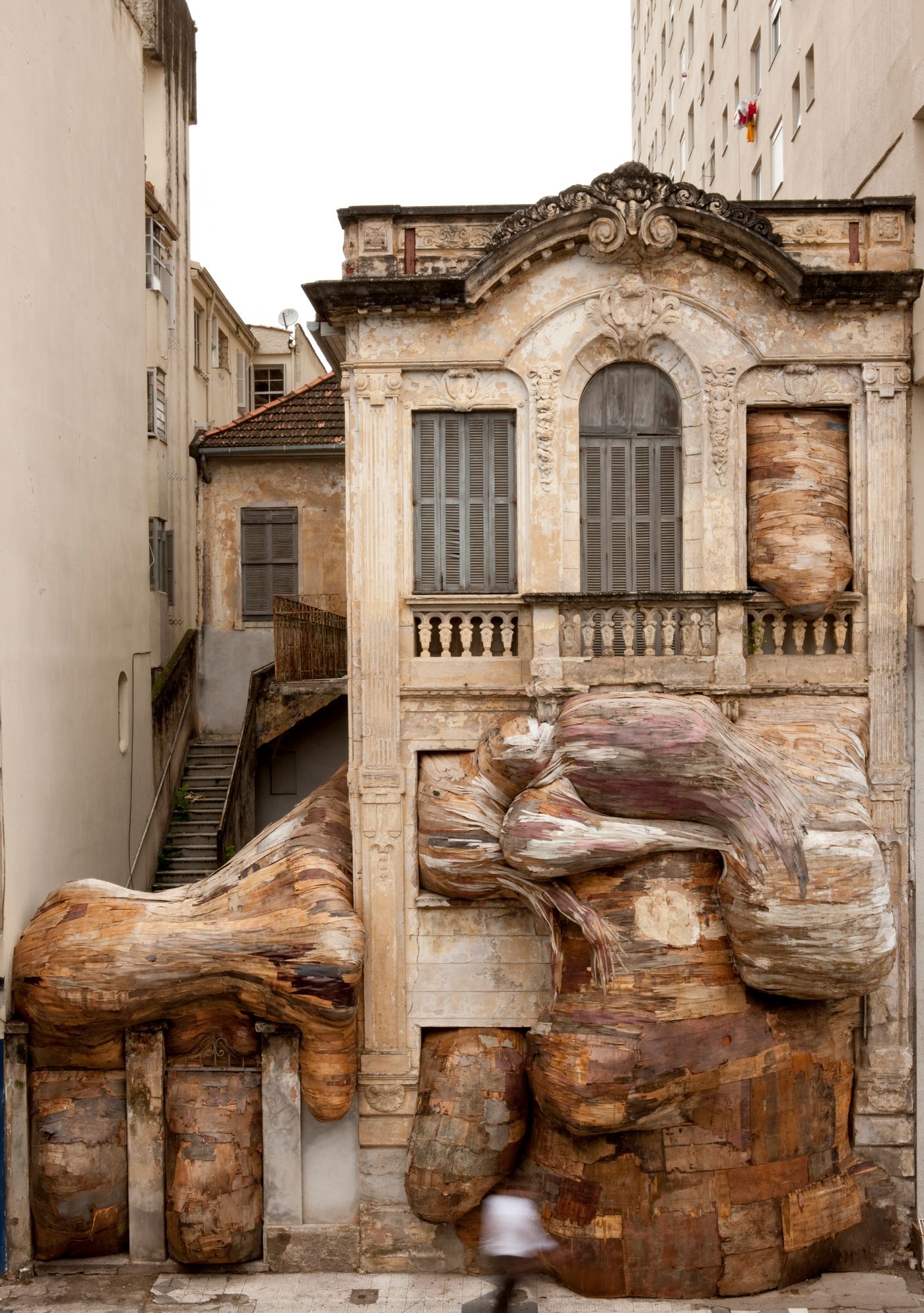
Henrique Oliveira Talks to Yatzer
Words by Stefania Vourazeri
Location
São Paulo, Brazil
Henrique Oliveira Talks to Yatzer
Words by Stefania Vourazeri
São Paulo, Brazil
São Paulo, Brazil
Location
In the world of contemporary art, asking an artist about the message behind their work often elicits either a pompous response or yet another tired cliché. This, however, is not the case with Henrique Oliveira, the Brazilian emerging artist celebrated for his monumental wooden installations. These irregular, sprawling forms devour large spaces, creating an uncanny sensation of inhabiting someone’s body.
Oliveira’s answer is refreshingly devoid of unnecessary conceptual jargon. “I believe that the message is never the art itself, but instead, the lack of a message is a characteristic that makes some creations interesting to me,” he explains. “My works may propose a spatial experience, an aesthetic feeling, a language development, and many other interpretations based on the relationship they establish with the viewer. But any attempt to find a message would fail.”
While Oliveira’s art may eschew overt messaging, his Brazilian identity and culture are unmistakably present in his work. “Everything we create is the result of our life experience, our culture, our language, and the exchanges we have made with other people throughout our lives,” he says.

(detail) Tapumes - Casa dos Leões | Henrique Oliveira, 2009
VII Bienal do Mercosul, Porto Alegre
plywood and PVC
photo © Eduardo Ortega
"Everything we create is the result of our life experience, our culture, our language, and the exchanges we have made with other people throughout our lives."
Analyzing his identity and experiences that shape his practice, Henrique Oliveira often refers to plywood, a material that significantly influences his sculptural work. In São Paulo, where construction is abundant, plywood is commonly used to isolate construction sites from the street.
In 2003, while still an art student, Oliveira researched painting surfaces and explored various materials. It was during this time that plywood became a key reference. “What first caught my attention about this kind of deteriorated plywood was its pictorial aspect,” he explains. “The textures, the colors, and the different tones organized in layers reminded me of a painting surface.”
But what is the force that dictates the way you work? And since the material plays such a pivotal role, doesn’t this restrain your ideas?
“The development of these works was a progressive attempt to force them to conform to my imagination,” he says. “It was a struggle between my wish and the resistance of a material that is not easily manageable.”
Oliveira’s sculptures extend across large spaces, almost commanding entire rooms. They demand space—a lot of it. Naturally, I wanted to know if scale matters in his practice and if, as an artist, he is particularly drawn to working on a large scale.
Does scale matter in your practice? Are you attracted to the idea of going large?
“The materials I use are meant for construction, so in a way, I have to go large,” he notes.
Henrique Oliveira’s wooden pieces are chaotic and abstract, yet they possess a natural quality that contrasts sharply with his earlier paintings, which are less naturalistic. “They have two different moods, and I like to have them in parallel. I think they even work as a compensation for each other,” he explains. He adds: “The artificiality of my paintings is related to the materials and the colors I use, but they have a truth in the sense that they don’t try to be anything they are not. What you see is paint manipulated on a surface. My wood constructions, on the other hand, are natural in their materiality but artificial in the sense that they give the viewer a sensation of something that is actually not happening.”
Oliveira identifies two main themes in his wooden works: “I call them pictorial and organic,” he says. While his process often begins with a sketch, working in large spaces allows for a much freer approach. “In the organic works, which are based on clearer references such as skin, bellies, organs, or tumors, I tend to follow a plan, though it can change a little along the way.”
Whether organic or pictorial, Oliveira’s works convey a strong sense of temporality. His aged wooden pieces, for instance, “show the transformation of matter,” he explains. However, there is also a temporality that is very much about the present. “There is a sense of movement,” he says.
This sense of movement is both deliberate and structural, often dictating the form of the work. In his rounded wooden installations, for example, Oliveira explores the elasticity of PVC tubes, playing with the idea of swollen walls. Through these pieces, he creates dramatic surfaces that seem to pulse with life, captivating viewers and evoking an extraordinary sense of movement.
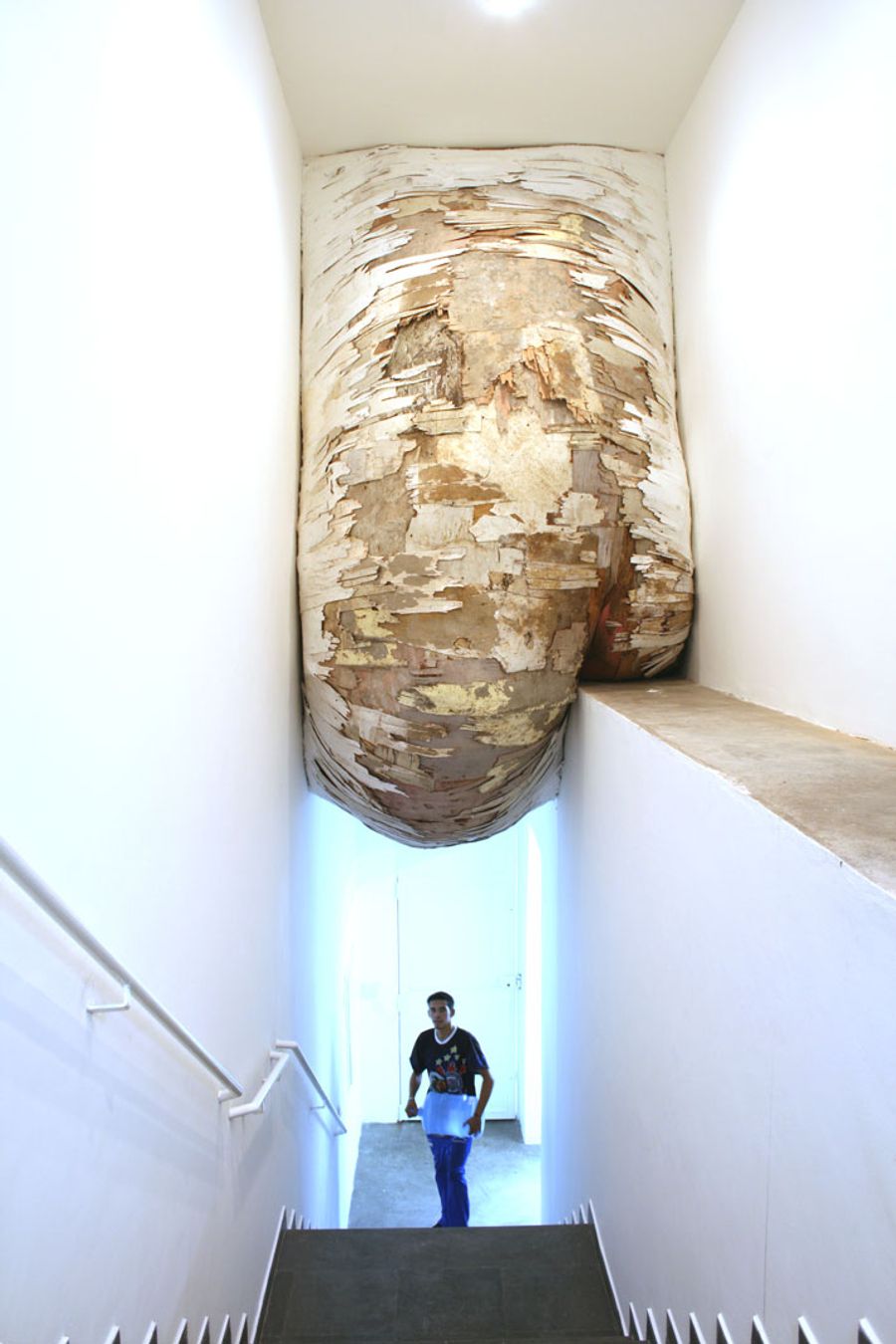
Architectonic Intumescence | â¨Henrique Oliveira, 2008
Baró Cruz Gallery, São Paulo
plywood and PVC
3,4 x 1,8 x 1,2 m
photo © Henrique Oliveira
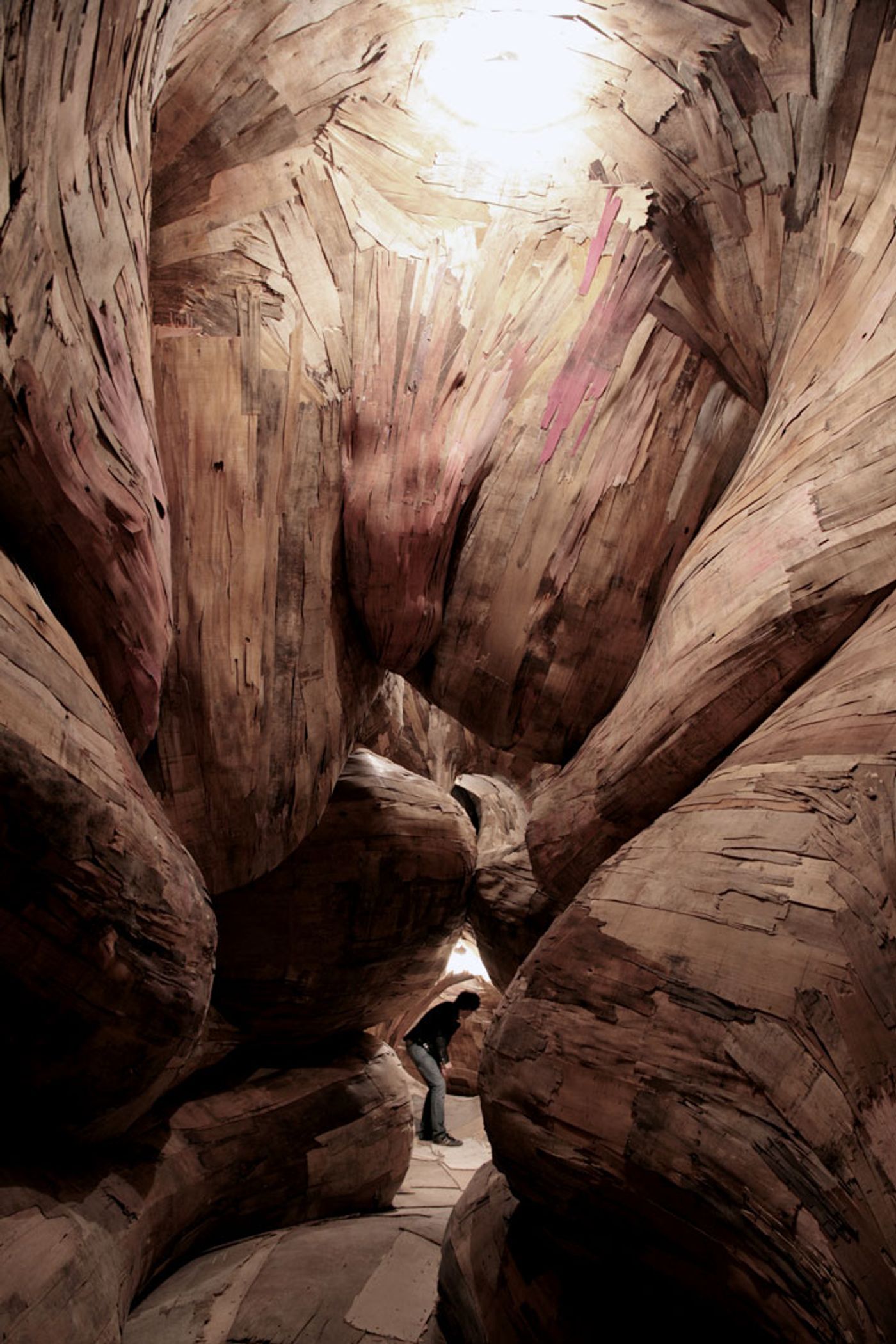
The Origin of the Tird World | (internal view) | Henrique Oliveira, 2010
29ª Bienal de São Paulo
plywood, PVC and metal
4,9 x 45 x 5 m
photo © Henrique Oliveira
